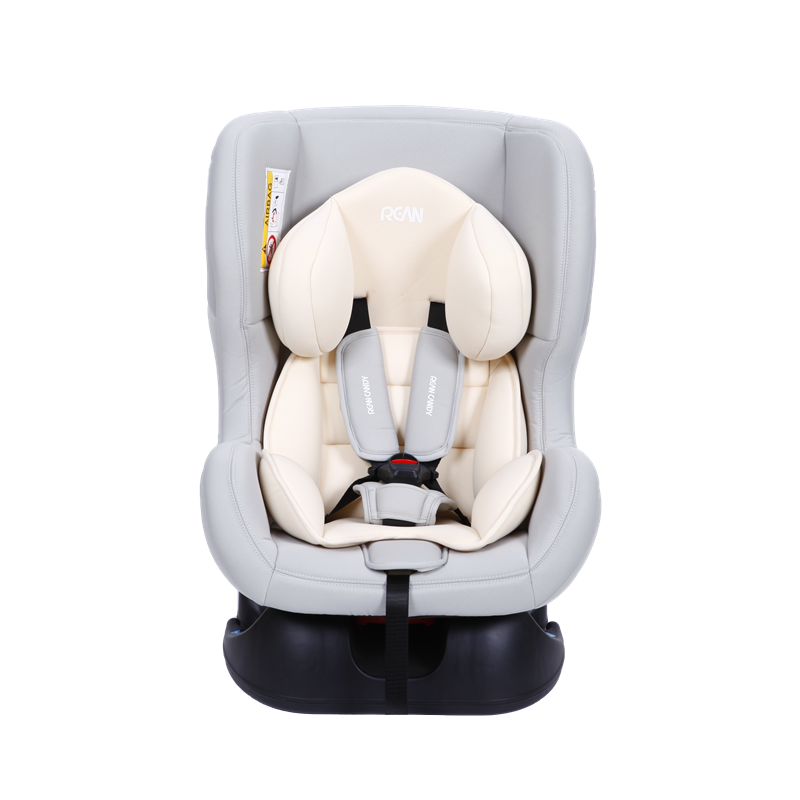The reason why child safety seats can protect children's safety in cars is mainly due to the following three aspects:
1. In the case of car collision or emergency braking, children can be restrained on the car seat and will not fly out;
2. By fully absorbing energy and restricting children's body movement, reduce the damage to children caused by the impact force and protect children's safety;
3. Prevent the child from moving freely in the car, accidentally opening the door, window, or falling out of the car.
So when children ride in a car, safety seats are essential. Of course, it is not enough to have a safety seat. Only when the safety seat is used correctly can it really play a protective role.
When children ride in a car, they need to choose safety seats or seat belts in four stages to protect the safety of children and passengers according to their height, weight and age at different stages of their physical growth.
Stage 1: Reverse Child Safety Seats (Infant Safety Seats; i.e. Groups 0 and 0+)
Suitable for children: weight 0-13 kg
Reference age: under 1 year old and 1 year old
How to use: Install the child safety seat in reverse, as long as the child's weight is within the load-bearing range of the seat, try to let the child use the reverse child safety seat to better protect the child's cervical spine.
The second stage: forward-facing child safety seat (child safety seat; i.e. Group I)
Suitable for children: weight 9-18 kg
Reference age: 1-4 years old
How to use: The child safety seat is installed in the forward direction, and the restraint belt inside the seat needs to properly restrain the child. As the child grows, this type of seat should be used as long as the child does not exceed the seat's weight capacity or height beyond the restraint length of the restraint belt.
The third stage: booster seats (with back booster or without back booster; that is, group II + group III)
Suitable for children: weight 15-36 kg, height below 145 cm
Reference age: 4-11 years old
How to use: After using the booster pad, the child will be restrained by the safety belt of the adult. The restraining position of the seat belt should be on the child's shoulders and crotch.
Stage 4: Seat belts for adults
Suitable for children: weight 36 kg or more, height 145 cm and above
Reference age: over 11 years old
How to use: When children use adult seat belts, they must: 1. The restraint position of the adult seat belt is on the child's shoulders and crotch; 2. Sit with the back against the seat; 3. Both feet can land on the ground stably; 4. This sitting posture can be maintained throughout the travel process.
It is very important to let children of different stages sit in safety seats of different stages, but don't think that having a safety seat is necessarily safe. All parents should be familiar with the following five details and two misunderstandings.
(1) Five details need attention
1. First, confirm whether the child safety seat is selected correctly.
2. When restraining a child with a safety seat or a safety belt, pull it hard and shake it left and right to make sure it is completely fixed.
3. Whether the shoulder belt of the seat or the car seat belt is twisted, whether it is tightened (leave a finger space), and fastened (there is a "click" sound when buckled).
4. Before getting on and off the car, have the ropes, shoelaces and scarves on the child's clothes been fastened, and no extra parts have been dragged out?
5. Whether the child safety lock of the car is locked to prevent children from opening the windows or doors, or stretching out their bodies.


1、ECER44/04 standard design .
2、3 Reclining positions, can sit or lie down
3、Both rearward and forward facing installation
4、Excellent safety performance for side and head guard.
5、Five-point safe belt harness system
6、Comfortable, breathable fabric material,more at ease .
7、Simple way of installation with 3 point vehicle belt

 English
English 中文简体
中文简体


















